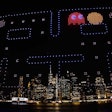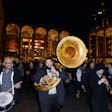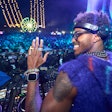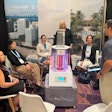The era of the zoot suit, jazz music, and supper clubs came alive at the warehouse of design company Art of the Party for a night of dinner and dancing it created for 220 administrators and presidents from several of America's Historically Black Colleges and Universities (HBCUs). All were in town for the 17th annual Honda Campus All-Star Challenge, an academic competition between students of HBCUs."Mary Oberembt, the general manager at the College Bowl Company (which produces the competition) approached us with the Harlem Renaissance theme, and we collaborated with Arthur's Catering to bring it to life," said Eric Karter, president of Art of the Party. "We immediately thought of black and white in relation to the theme but expanded into a supper club feel to add more color to the event."
Guests were bused to the warehouse and welcomed with a red carpet entrance. Inside, a casino area was set up using the company's lighted poker, craps, roulette, and blackjack tables. Three-dimensional backdrops of a city skyline measuring 40 by 20 feet were set up across from the gaming area. Brick walls, street lamps, foliage, and black-and-white checkered bars helped create a retro environment. A DJ played jazz and blues during cocktails, adding more authenticity.
Dinner was set up in a separate area, which guests entered through a 12-foot-tall antique radio façade flanked by mannequin jazz singers. The area was designed to resemble a supper club, and 18 tables were dressed with jewel-colored linens with deep purple, red, orange, and yellow tones. A 12-inch jazz musician sculpture acted as the centerpiece on the otherwise simple tablescape. The dining area was also jazzed up with six-foot-tall saxophones, guitars, and trumpets.
Arthur's Catering set up three food stations serving a variety of traditional favorites such as fried cod fish, collard greens, cornbread, chili, seafood gumbo, and more. A dessert station contained a chocolate fountain with fresh fruit, marshmallows, and other sweet treats for sipping. One station was accented by a 44- by 16-foot wall of pillows in coordinating jewel tones.
After dinner, the supper club music switched from jazz to modern rhythm and blues, but guests held on to the Harlem Renaissance energy well in to the night.
—Vanessa Goyanes
Guests were bused to the warehouse and welcomed with a red carpet entrance. Inside, a casino area was set up using the company's lighted poker, craps, roulette, and blackjack tables. Three-dimensional backdrops of a city skyline measuring 40 by 20 feet were set up across from the gaming area. Brick walls, street lamps, foliage, and black-and-white checkered bars helped create a retro environment. A DJ played jazz and blues during cocktails, adding more authenticity.
Dinner was set up in a separate area, which guests entered through a 12-foot-tall antique radio façade flanked by mannequin jazz singers. The area was designed to resemble a supper club, and 18 tables were dressed with jewel-colored linens with deep purple, red, orange, and yellow tones. A 12-inch jazz musician sculpture acted as the centerpiece on the otherwise simple tablescape. The dining area was also jazzed up with six-foot-tall saxophones, guitars, and trumpets.
Arthur's Catering set up three food stations serving a variety of traditional favorites such as fried cod fish, collard greens, cornbread, chili, seafood gumbo, and more. A dessert station contained a chocolate fountain with fresh fruit, marshmallows, and other sweet treats for sipping. One station was accented by a 44- by 16-foot wall of pillows in coordinating jewel tones.
After dinner, the supper club music switched from jazz to modern rhythm and blues, but guests held on to the Harlem Renaissance energy well in to the night.
—Vanessa Goyanes
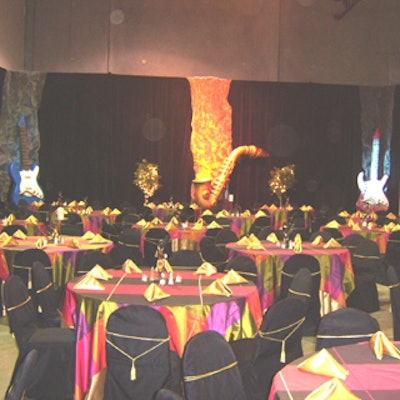
Oversized jazz instruments and jewel-toned tables gave Art of the Party's warehouse a supper club feel for a Harlem Renaissance-themed event.
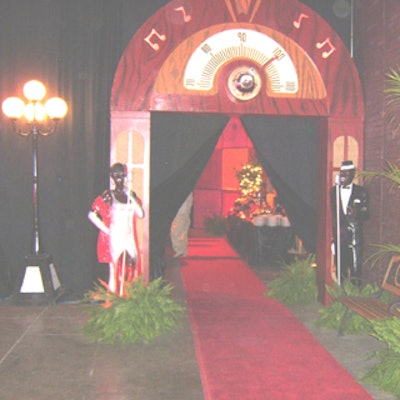
The entrance to the dining area was made using a 12-foot antique clock fa?ade and jazz singers.










